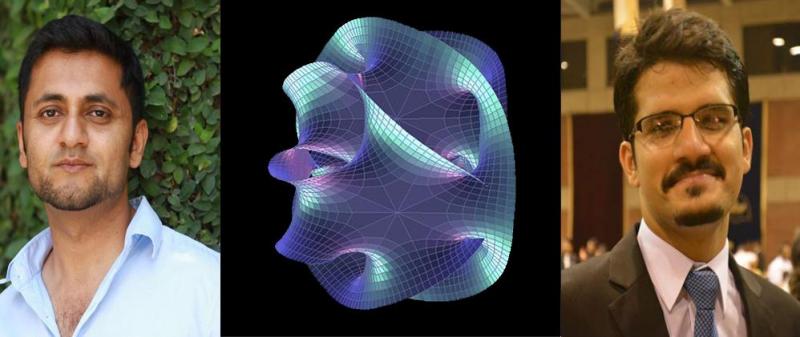
LUMS Physics faculty, Babar Qureshi in collaboration with Amer Iqbal and LUMS graduate, Ali Shehper, as well as a LUMS research assistant, Ahsan Khan have published an important result on Topological String Theory. Khurram Shabbir is also an author on this work. Their work, titled " Topological Field Theory Amplitudes for A_{N-1} Fibrations", has been published in the prestigious "Journal of High Energy Physics."
Topological String Theory is a simplified version of the original string theory which offers much to be learnt in its simplified setting about the string dynamics. It has found many applications in understanding gauge theories (fundamental objects in current high energy physics), black holes as well as in a fascinating area of pure mathematics i.e. mirror symmetry.
One of the biggest successes of String Theory has been to reproduce the classical expression of black hole entropy for a large class of black holes. In 2004, Ooguri, Strominger and Vafa found that not only can this expression be reproduced using topological strings but also conjectured that quantum corrections to this expression are precisely related to the topological strings on the internal manifold. Since then, this conjecture has been verified for a large class of non-compact manifolds - the toric Calabi-Yaus.
Topological strings on non-toric Calabi Yaus, however, have not been very well understood. Shehper's work in this paper is the first step to verify the OSV conjecture for a class of non-toric Calabi Yau three-folds: resolution of A_{N-1} singularities fibered over genus g Riemann surface.
Ali Shehper is currently working as a Teaching Assistant at the Department of Physics. He is going to join a research group headed by Prof. Steven Weinberg, the joint Nobel laureate with Prof. Salam, at University of Texas at Austin this fall. Ahsan Khan worked as a research assistant at LUMS while he worked on this paper and is also going to join the University of Texas at Austin
Journal of High Energy Physics (JHEP) is the top most journal in the field of high energy physics according to Google Scholar Rankings with an impact factor of 6.11. The paper is freely accessible from the JHEP website at the following link:
http://link.springer.com/article/10.1007%2FJHEP12%282015%29017







